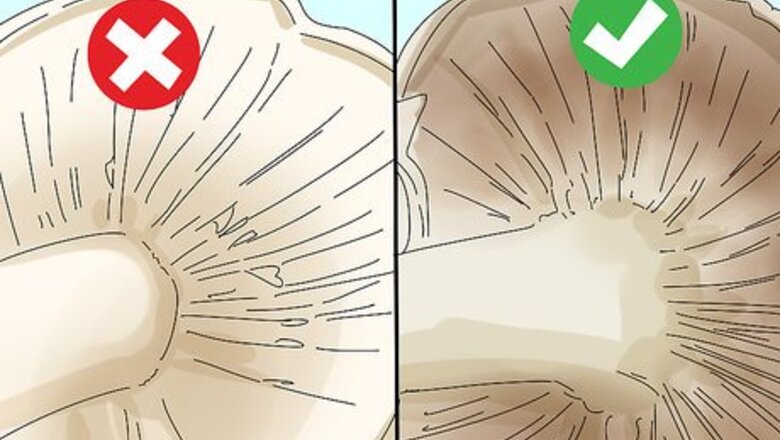
views
Observing Mushroom Appearance and Exercising Caution
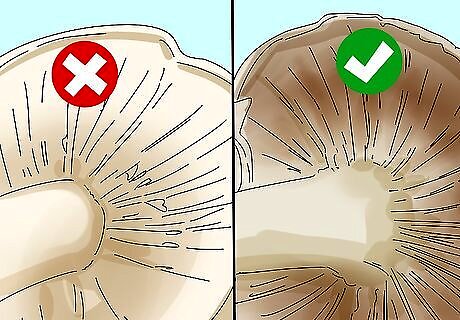
Choose mushrooms without white gills. Look for mushrooms with gills that are brown or tan. While some mushrooms with white gills are edible, the most deadly and poisonous mushroom family—Amanitas—nearly always have white gills.
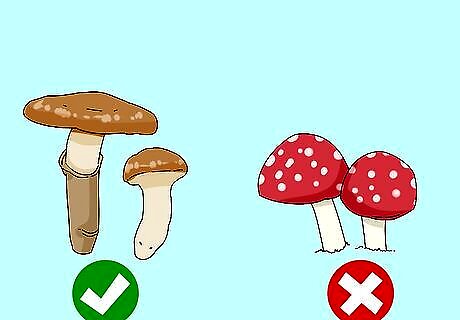
Select mushrooms without red on the cap or stem. Choose mushrooms with white, tan or brown caps and stems. Many red mushrooms are poisonous. A red mushroom is using its only natural warning system, it’s color, to tell predators—including you—to steer clear.
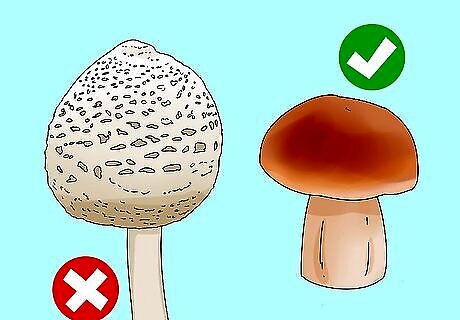
Look for mushrooms without scales on the cap. Avoid mushrooms with patches or scaling of a lighter or darker shade on the cap, which may appear like spots. These scaly spots are common among poisonous mushroom varieties. For example, white mushrooms may have tan or brown scaly patches.
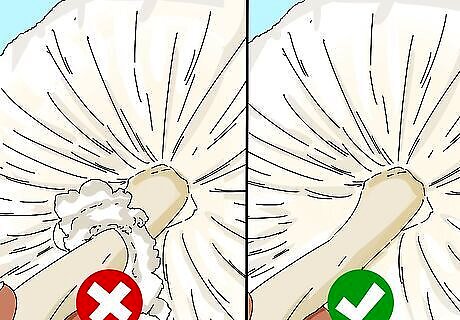
Seek out mushrooms without a ring around the stem. Check beneath the cap of the mushroom for a second veil-like ring of tissue that looks a bit like a mini-cap beneath the cap. If the mushroom you’re observing has this ring of tissue, skip it. Many mushrooms with this feature are poisonous. It can be hard to spot or identify the ring, and no single, obvious trait will tell you if a mushroom is poisonous, so your best bet is to consult an expert.
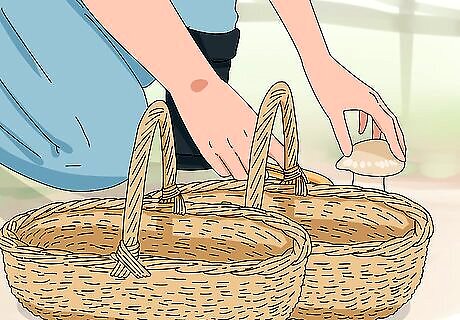
Take two baskets when you forage. Place mushrooms you are confident are edible in one basket, and mushrooms you aren’t sure about in another. You won’t get ill simply from handling a poisonous mushroom. Consult a knowledgeable expert to identify any mushrooms you aren’t sure about. You can connect with a mushroom expert through a local mycological group or at a local university. There is not one particular location that edible mushrooms grow. They can be found on trees, logs, the forest floor, or on moss. There is no need to wear gloves when foraging.
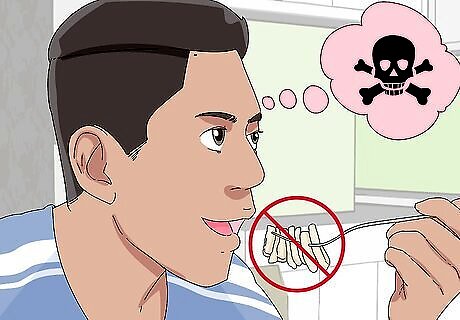
Don’t ingest a mushroom unless you are 100% sure of what it is. Use extreme caution when foraging for mushrooms, as many poisonous and nonpoisonous varieties look alike. Some varieties of mushrooms can change their appearance depending upon growing conditions, making identification difficult. For example, mushrooms of the same variety can develop color differently based on their exposure to sunlight. Experts suggest never eating any variety of mushroom that you haven’t been able to identify at least 3 times in the wild. A professional should confirm that you have identified the mushroom properly each of those 3 times.
Identifying Common Edible Mushrooms

Look for a medium-sized tan or brown cap to find porcini mushrooms. Search for Porcinis near spruces, firs, and pines. They are typically ready to harvest in early fall at lower elevations and summer at higher elevations. They tend to have thick bulbous stems near the ground that get thinner towards the cap.
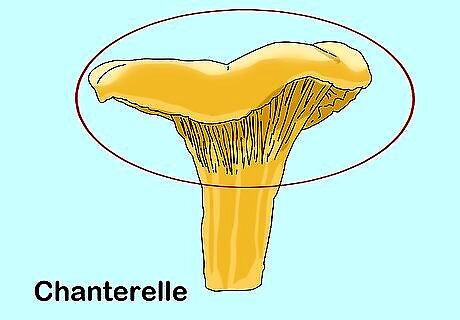
Forage for a small cap with a concave center to find Chanterelles. Look for a yellow to golden-yellow colored mushroom with wavy, upturned edges. The stalk is shaped like a trumpet and thickens where it joins the cap. Chanterelles are often found under hardwood trees and conifers in the fall to early spring time.
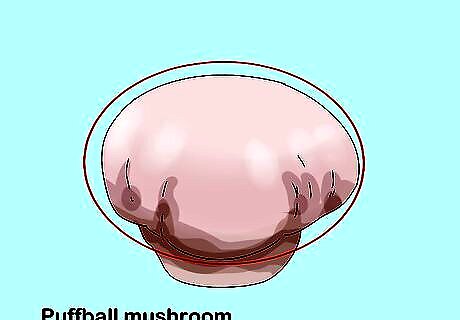
Look for a globe-shaped white or pale tan cap to find Puffballs. Keep an eye out for the puffball’s unique, densely packed spines on the cap, which brush off easily. Puffballs tend to grow along trails and woodland edges in the fall and winter. Cut puffballs in half to check that they are good to eat. They should be pure white inside. If they are yellow or brown inside, they are no longer edible.

Search for a tall, column-like cap with flaky shingles to find Shags. Look for numerous, blade-like gills that hang down tightly over a hollow stalk. These mushrooms grow well in urban areas in cool, wet weather. Avoid picking Shag mushrooms near busy roads, as they may be contaminated with car exhaust.
Increasing Your Knowledge about Edible Mushrooms

Join a local mycological group. Search for a mycological group in your area online. If you’re in the U.S., search the directory of the North American Mycological Association. These groups promote the study of mushrooms, and many hold classes or other meet-ups to help educate the public. Many groups may even hold nature walks or other field events for people who want to learn more about foraging.
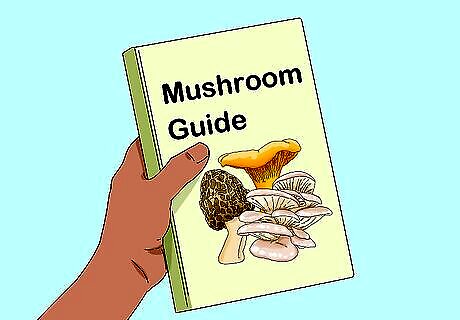
Buy a mushroom field guide for your area. Go to your local bookstore or an online retailer to purchase a mushroom field guide for your region. You can take the book when you go out foraging to practice identifying different mushrooms. It may also help you become more familiar with common edible and poisonous varieties.

Check for mycology classes at your local university. Ask the registrar at your local university about the possibility of auditing mycology classes. You can further develop your mushroom-identification skills and learn more about edible varieties of mushrooms. If your local university doesn’t have classes you can audit, ask your local mycological group what classes or resources they would recommend.
Seeking Medical Care after Eating an Unidentified Mushroom
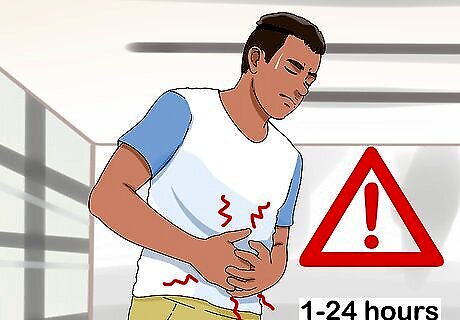
Look for gastrointestinal upset within 1-24 hours. Seek medical treatment right away if you have diarrhea, vomiting, blood in your vomit or stool, or intestinal cramping after ingesting unidentified mushrooms. Your local emergency room can replace lost fluids and address any mushrooms toxicity causing your symptoms. In some cases, gastrointestinal symptoms can progress to impaired kidney function if you don’t seek treatment right away. Even if you feel embarrassed at having eaten a potentially dangerous mushroom, do not be shy about seeking treatment. Medical practitioners are only concerned about your health.

Pay attention to excessive salivation, tears, lactation, or sweating. Call emergency services right away if you notice an involuntary nervous system response, such as profuse and uncontrolled sweating or crying. These symptoms can occur as quickly as 15-30 minutes after ingesting a potentially harmful mushroom. Act quickly, as these symptoms can progress to visual disturbances, decreased blood pressure, or difficulty breathing. Due to the potential for a rapid escalation in involuntary-nervous-system symptoms, it’s best to call for help rather than attempt to drive yourself to the emergency room. In emergency care, doctors can administer Atropine, an antidote that resolves most of these symptoms. Most people make a full recovery in 24 hours, but respiratory failure is possible without treatment.

Don’t ignore any visual distortions, delusions, or excessive drowsiness. Seek emergency medical services for any central nervous-system disturbances, such as sleepiness or hallucinations. Ingesting certain mushrooms can cause severe central-nervous reactions, such as convulsions or even a coma. Medical teams can provide supportive care for any anxiety and fluid-loss you experience. Typically these symptoms pass on their own without causing long-term damage.
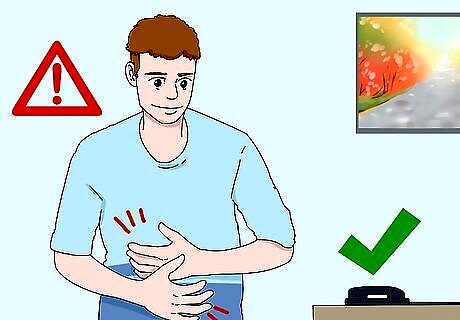
Stay vigilant for a reemergence of symptoms after medical treatment. Notice any trouble symptoms, either mental or physical, that recur after you have seemingly “recovered” from your mushroom episode. Certain deadly mushrooms, such as those in the Amanita family, can cause a 24-hour period in which patients appear to improve before relapsing and experiencing organ failure. If you have any reason to believe you have eaten an Amanita mushroom of any kind, don’t wait for symptoms to appear. Seek emergency medical care right away. Let personnel know what kind of Amanita you have ingested, how much you ate, and how recently. If you have any pieces of the mushroom remaining, provide them to the staff for analysis.














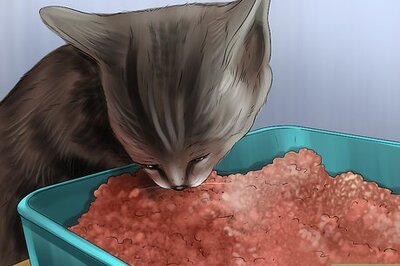





Comments
0 comment